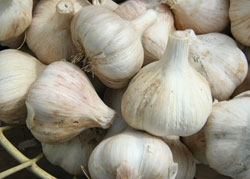Biopesticides are pesticides that are made from naturally-occurring materials such as animals, plants, bacteria, and certain minerals. Some examples of Biopesticides include products containing microbials like Bt (a bacterium) or Trichoderma (a fungus), as well as biochemicals like Neem, plant extracts, and pheromones. There are also many naturally occurring substances that are used as pesticides and include things like clove oil, citric acid, garlic, linseed oil, citronella, and corn meal. These naturally occurring pesticides are considered Minimum Risk by EPA because they occur in food or are considered safer. Many of the biopesticides and minimum risk pesticides are approved for use in Organic food production and the product label would contain an OMRI-approved statement.

Although biopesticides are generally considered less toxic than conventional pesticides because they occur in nature, they still pose a risk to the user because of their heightened concentration. Many of these products can be irritating to skin and eyes and some can cause allergic reactions. It is important that persons using these products read and follow the label carefully to avoid injury.
Many homeowners may be tempted to use some naturally occurring products and create their own ‘home remedy’. While it may seem an easier, cheaper, and faster solution to a pest problem, it can be a slippery slope. Materials that have been reviewed and registered by EPA have undergone extensive testing and contain consistent concentrations from batch to batch. In addition to having directions for use, having personal safety and storage instructions is important – things that are missing from make-it-yourself squirt bottle solutions.
Before applying any type of pesticide, whether it’s natural or synthetic, monitor and identify the pest problem you want to manage so you can choose the most effective pest management techniques. If you decide to use natural and/or organic-approved pesticides, be sure to read and follow directions and use proper safety techniques during application.
For more information, see the following Colorado State University Extension fact sheet(s).



